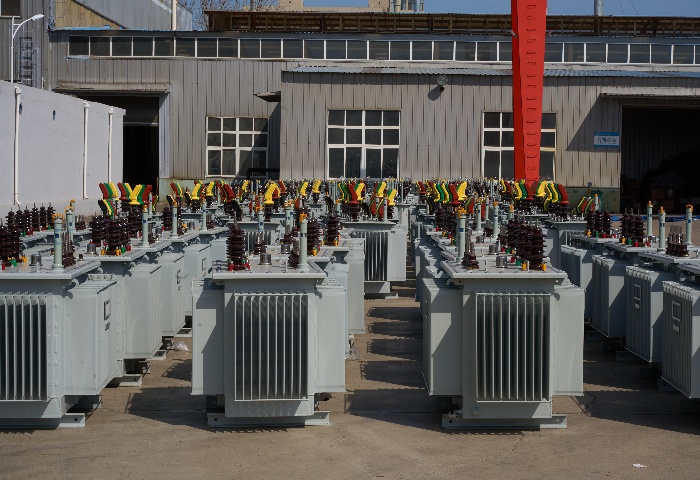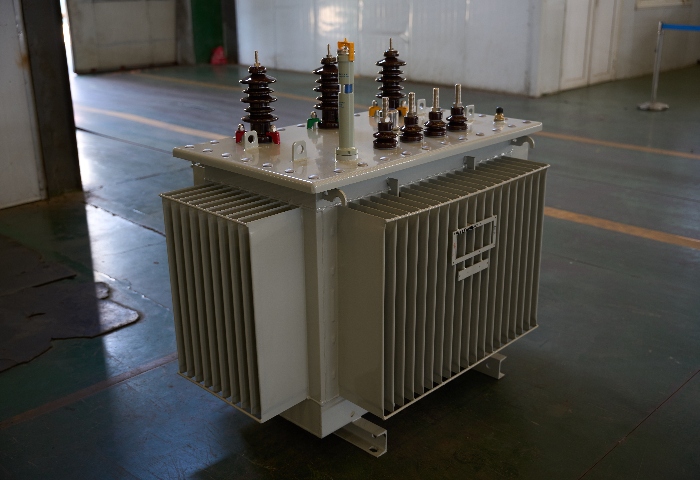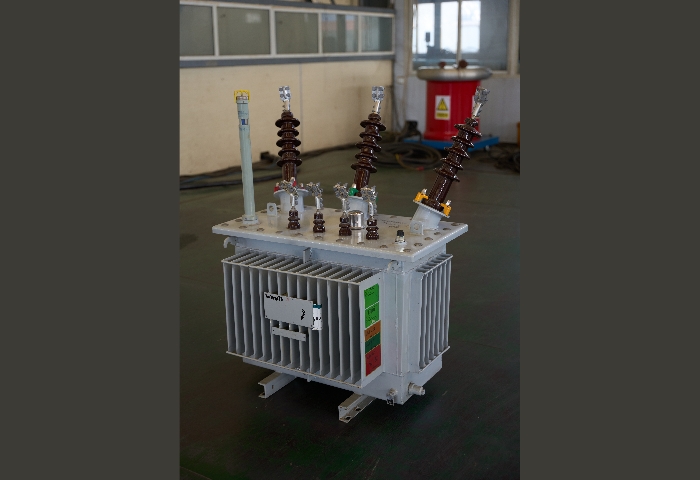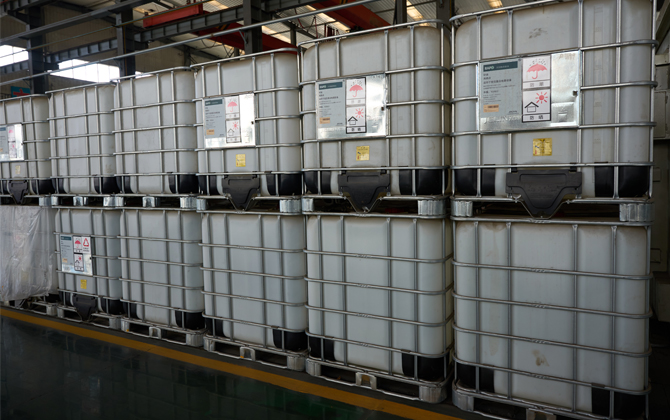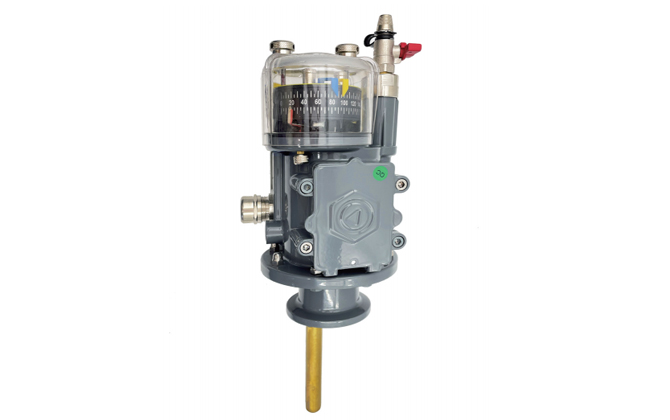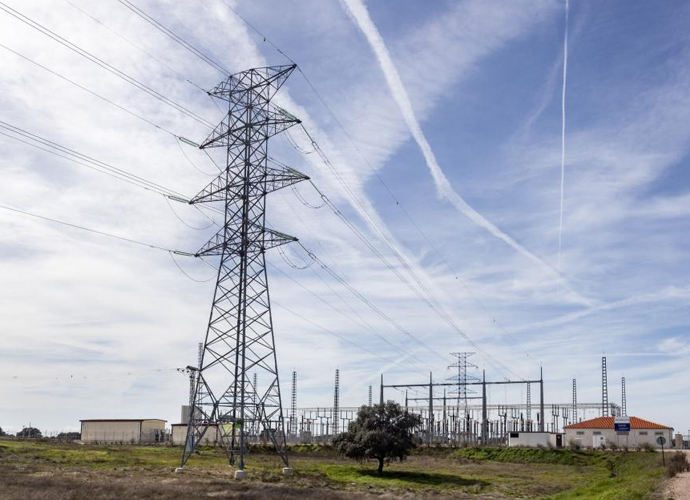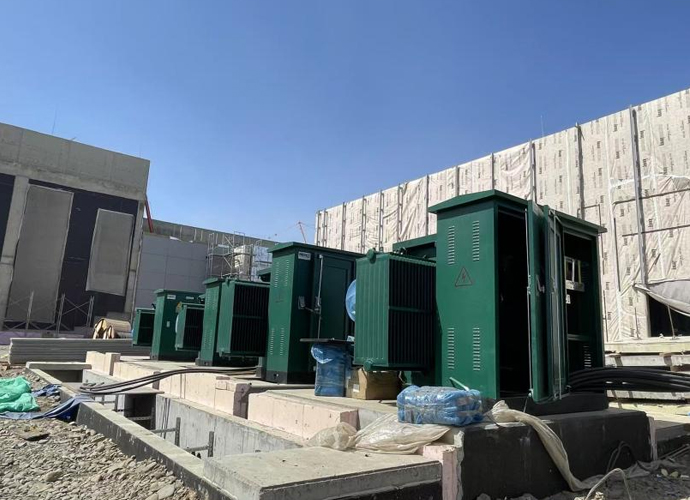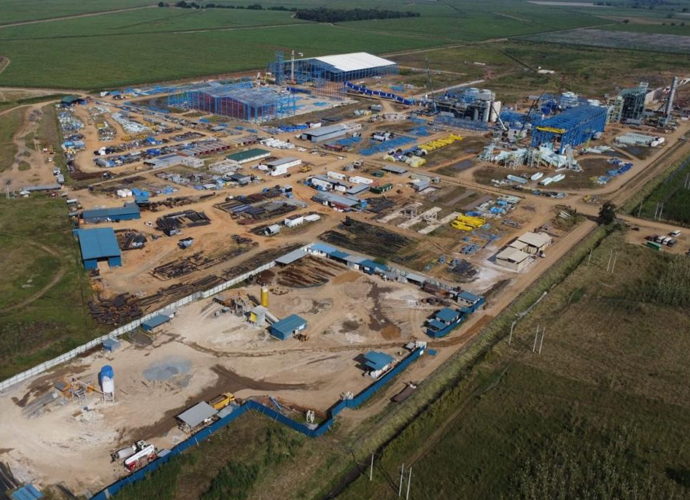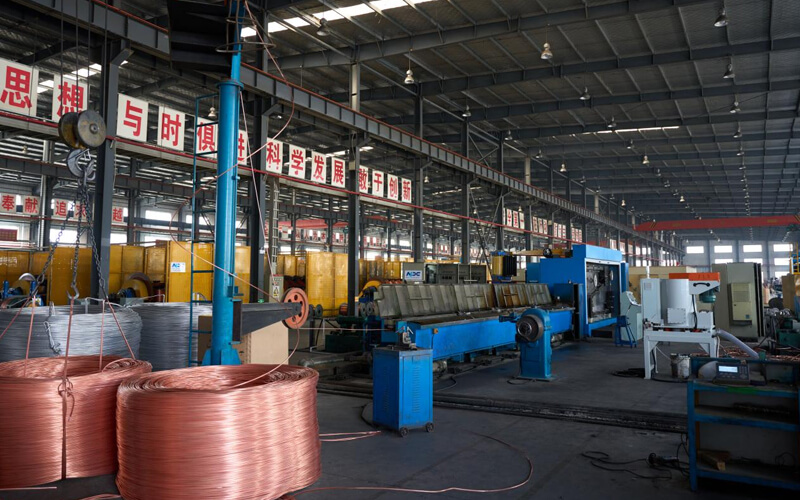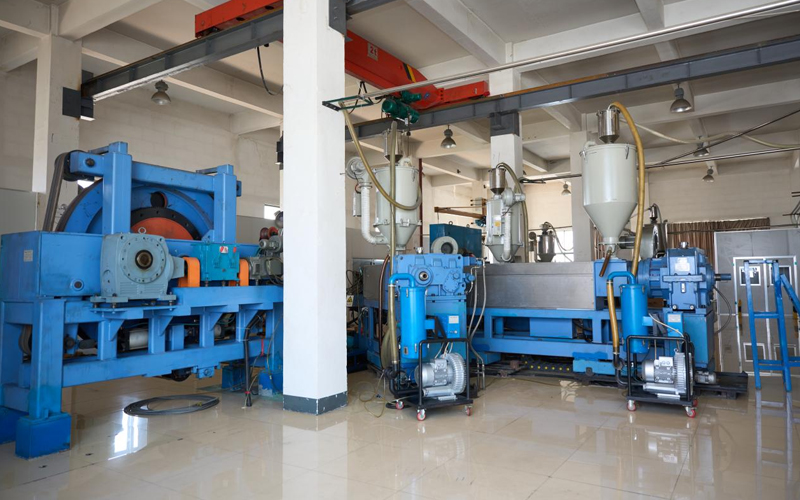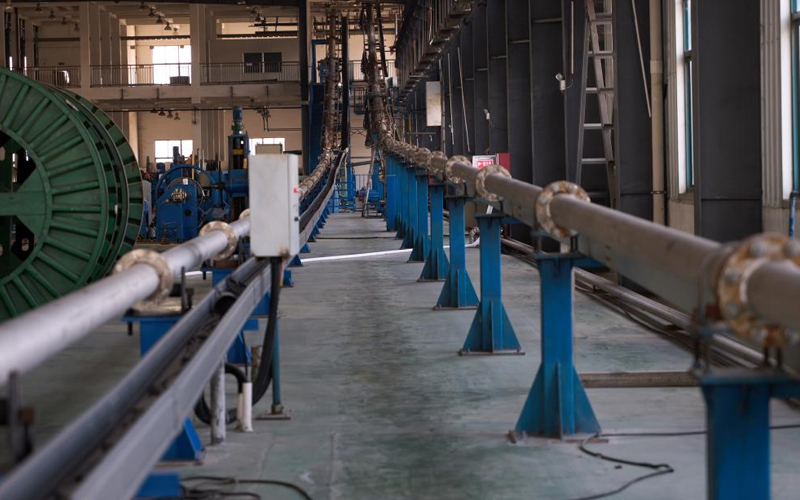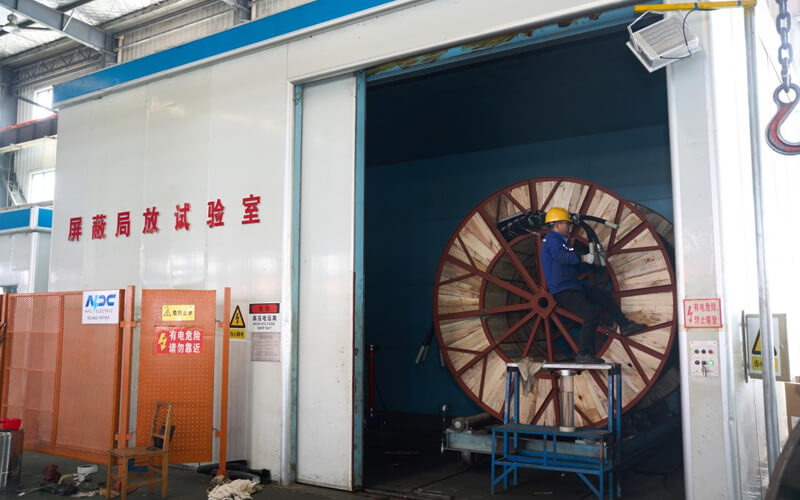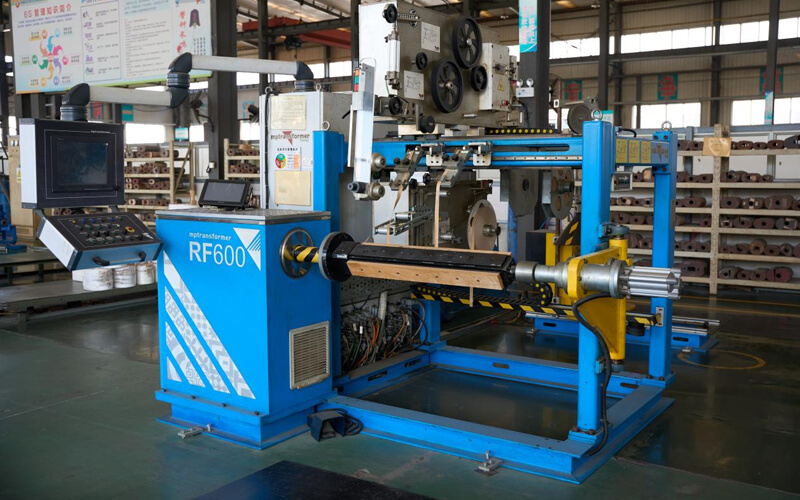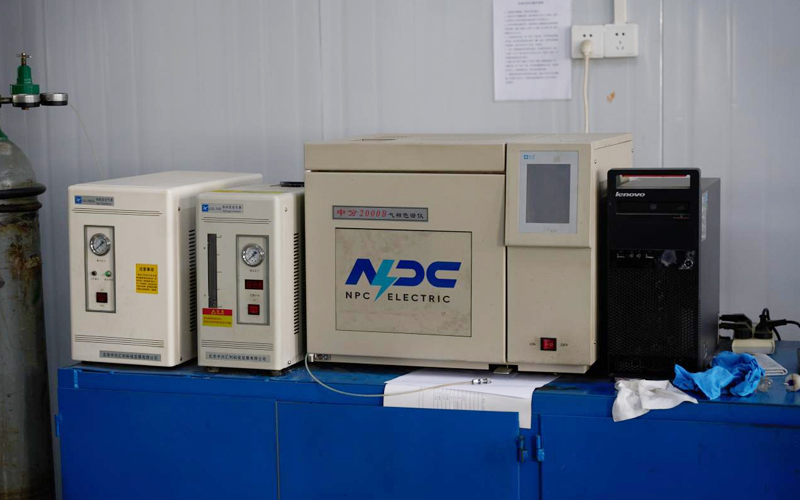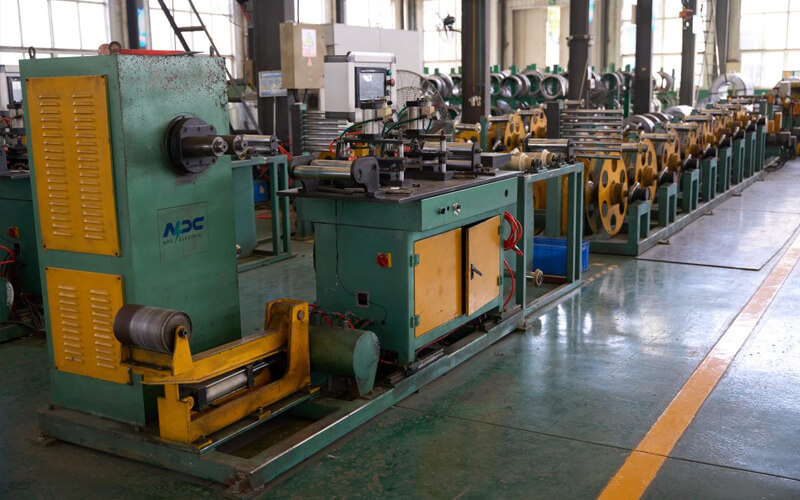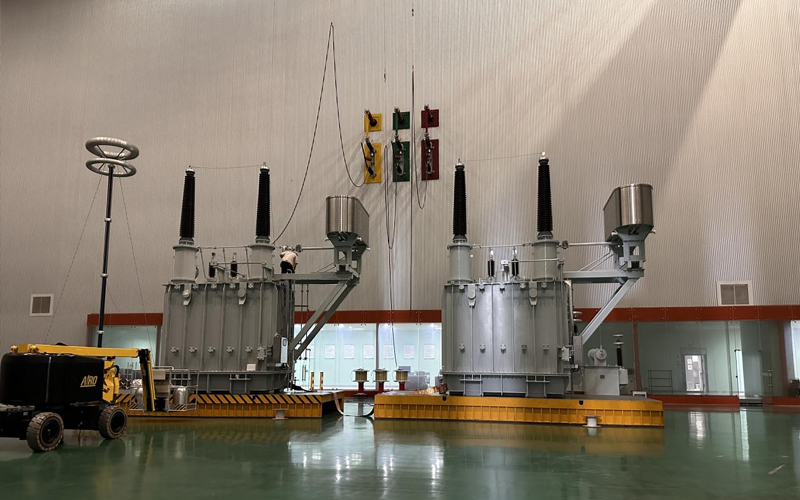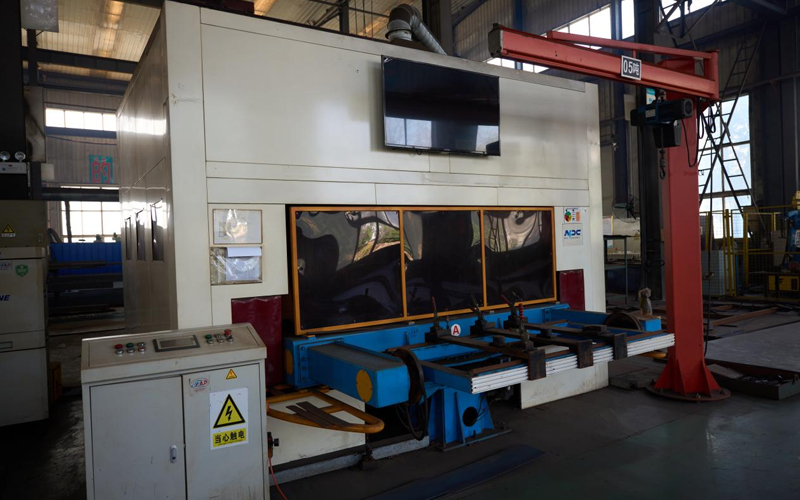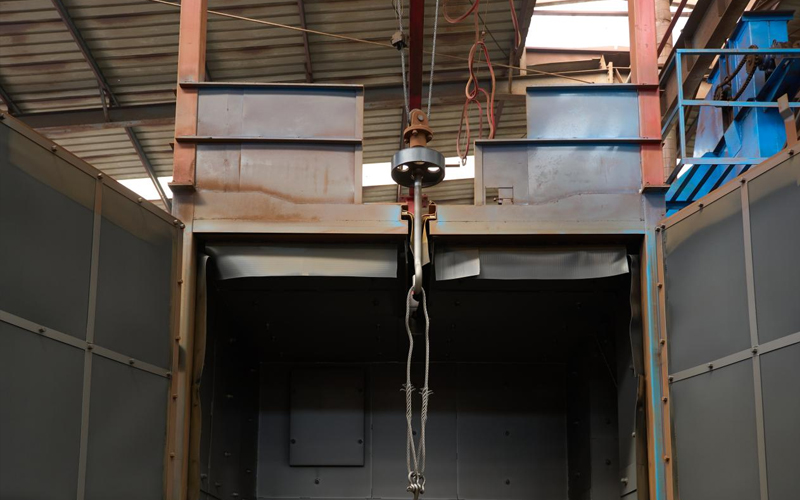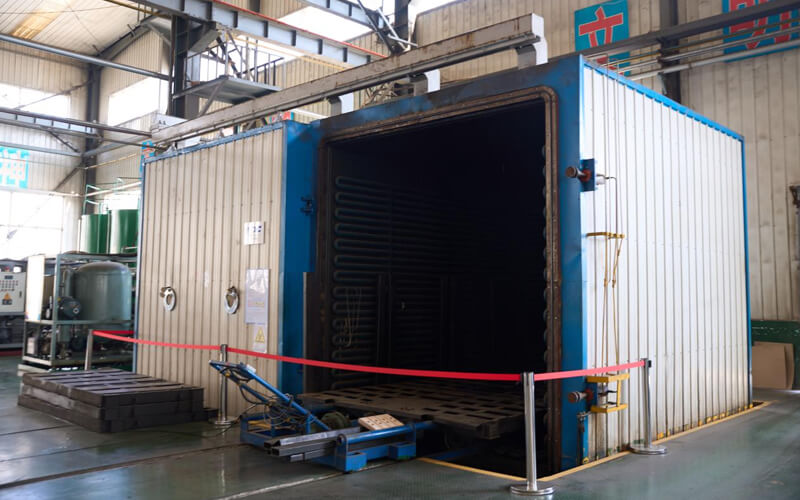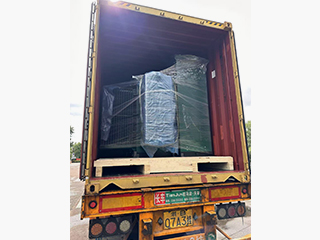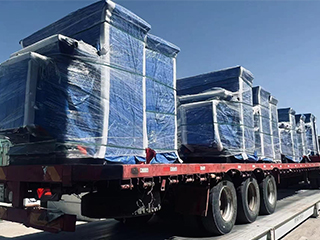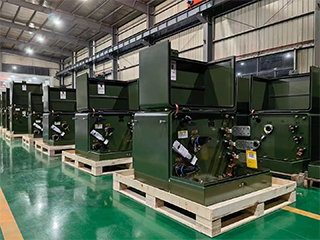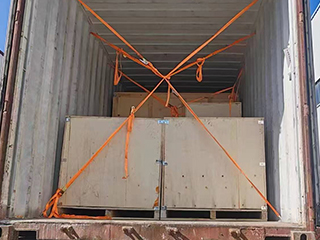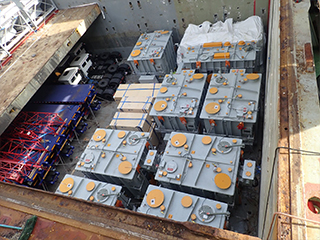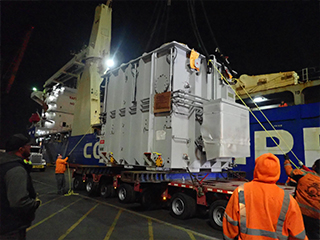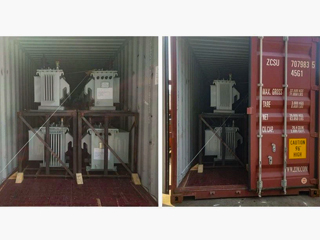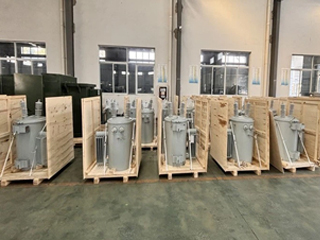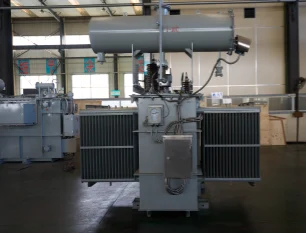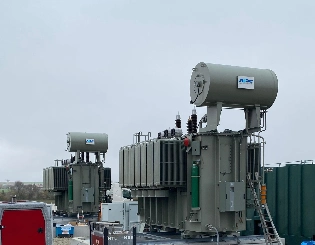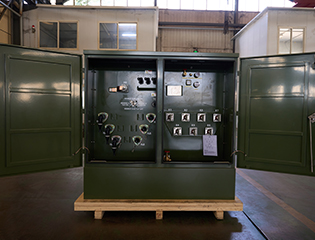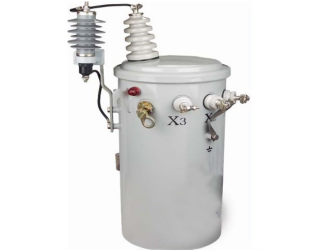250kVA Oil Immersed Transformer
- Primary Voltage Ratings 34.5-19.92/13.8-7.957/13.2-7.62/12.47-7.2, 24.94, 26.25, 33 or others
- Secondary Voltage Ratings 480/277V, 400/230V, 380/220V or customized
- H.V. Tap Range ± 2×2.5% HV taps or others
- Type Oil immersed distribution transformer
- BIL 30/95kV
- Standards IEEE, ANSI, NEMA
- Application Energy And Power Distribution Stations, Wind And Solar Power Generation Systems etc
- Power Rating 250kVA
- Certificate ISO, CE, UL
- Cooling Method ONAN, ONAN/ONAF, KNAN, KNAN/KNAF
- Oil Mineral Oil or FR3
- Opeartion Step Down & Step Up
Technical Specifications
| Technical Specifications | ||
| Rated Power | 250 kVA | |
| Rating Primary Voltage | 2.4 - 34.5kV | |
| Secondary Voltage | 480/277V 400/230V 380/220V Customized |
|
| Frequency | 50/60Hz | |
| Vector Group | Dyn11, Yyn0, Dyn5 | |
| Winding Material | Aluminum/Copper | |
| Efficiency | As IEEE, Doe 2016, CAS Std or Customized | |
| Impedance Voltage | Nominal 2% or Customized 1.1 - 5.75% | |
| Altitude | ≤1,000m or Customized | |
| Color | ANSI 70 Light gray/Munsell 7GY3.29/1.5 or customized, etc | |
| Tank material | Mild Steel, 304 Stainless Steel | |
| Insulating Oil Weight | 400 kg | |
| Total Weight | 1550 kg | |
| Outline Dimensions(L×W×H)in. | 1620 × 1200 × 1720(mm) | |
| HV Bushing |
| LV Bushing |
| Tap changer |
| Oil level gauge |
| Oil temperature indicator |
| Pressure relief device |
| Pressure vacuum gauge |
| Lifting hook for complete transformer |
| Name plate |
| Radiators |
| Oil upper filtering valve |
| Oil drain valve with 3/8" sampler |
Customization Optional
Packing and Shipping
Packing
Main body protection: The transformer body is first cleaned to remove surface impurities and oil stains. Then it is wrapped with moisture-proof and rust-proof plastic film to prevent rust caused by moisture erosion during transportation. Then, the key parts of the transformer, such as radiators, oil pillows, gas relays, etc., are individually wrapped and fixed with cushioning materials such as foam and sponge to reduce damage caused by collision and vibration.
Accessory packaging: For transformer accessories, such as thermometers, oil level gauges, desiccant, valves, etc., special plastic boxes or wooden boxes are used for packaging. Soft cushioning materials are filled in the packaging to ensure that the accessories do not collide with each other during transportation. At the same time, each accessory is numbered and marked, and a detailed list is attached to facilitate users in checking during installation.
Overall packing: The wrapped transformer body and the packaged accessories are packed together in a special large wooden box or metal box. The box should have sufficient strength and rigidity to withstand various external forces during transportation. Fixing devices are set in the box to firmly fix the transformer body to the bottom of the box to prevent shaking and displacement during transportation. In addition, obvious signs such as "upward", "fragile", "moisture-proof", and so on are marked on the surface of the box to remind the transportation personnel to pay attention to the correct handling and storage methods.
Transportation
Transportation method selection: Choose the appropriate transportation method according to the transportation distance, transportation conditions, and customer requirements. For short-distance transportation, road transportation can be used, and large trucks can be used for loading; for long-distance transportation, railway transportation or water transportation can be considered to reduce transportation costs. When choosing a transportation method, it is necessary to ensure that the transportation vehicle has sufficient carrying capacity and stability to ensure the safe transportation of the transformer.
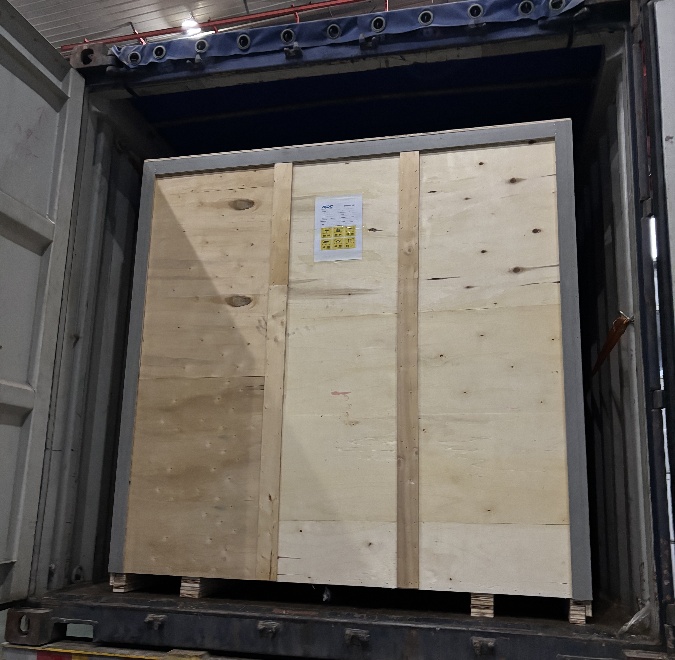
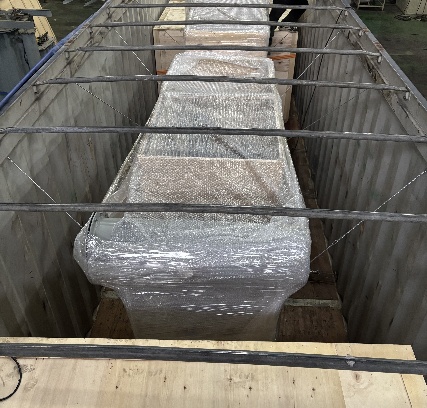
Manufacturer Test
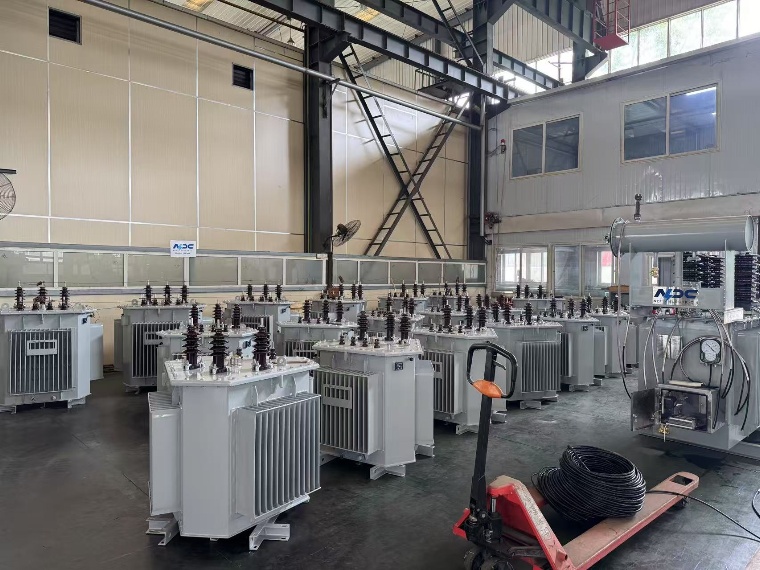
Progress Test
NPC Electric manufactures three-phase oil-immersed transformers the strict quality control. The Optional Specifications for a 250kVA Three-Phase Oil-Immersed Transformer can include various customizations and features that enhance its performance, reliability, or suitability for specific applications. These options may involve different types of tap changer mechanisms, such as manual or motorized tap changers, allowing for voltage regulation under load. Additionally, the transformer may be equipped with advanced protection devices like temperature sensors, pressure relief valves, or Buchholz relays for enhanced safety and early fault detection. The transformer’s bushings could also be selected in various configurations, including silicone or porcelain types, depending on the environmental and electrical requirements. To further improve operational efficiency, options for higher-grade insulating oil, such as biodegradable or eco-friendly oils, may be available. For outdoor installations, the transformer could include weatherproof enclosures or corrosion-resistant coatings for extended durability in harsh environments. Other optional specifications might include noise reduction features, such as soundproof enclosures, and compliance with specific standards or certifications, like IEC or IEEE, to meet local regulatory requirements. These optional features allow the transformer to be tailored to specific operational needs and environmental conditions.
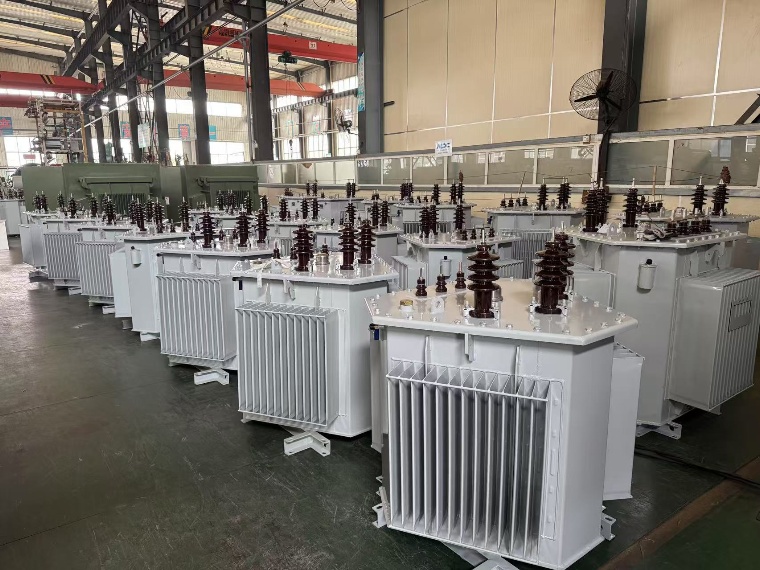
Design Tests
All transformer will be test after finished the production, test items as below:
♦ Insulation Power Factor
♦ Ratio, Polarity, and Phase Relation
♦ Winding Resistance
♦ Impulse Tests
♦ On load Loss Test
♦ No Load Loss Test
♦ Leak Test
♦ DC Insulation Resistance Test
♦ Transformer Turns Ratio/TTR (All Tap Voltages)
♦ Impedance Voltage & Load Loss (Rated Voltage)
♦ Polarity, 1-Ph / Phase Relation, 3-Ph (Rated Voltage)
♦ Excitation & No-Load Loss (Rated Voltage)
♦ Applied Voltage
♦ Induced Voltage
♦ Lightning Impulse
♦ Insulation Resistance (Rated Voltage)
♦ Temperature Rise
♦ Dielectric Withstand (Hipot)
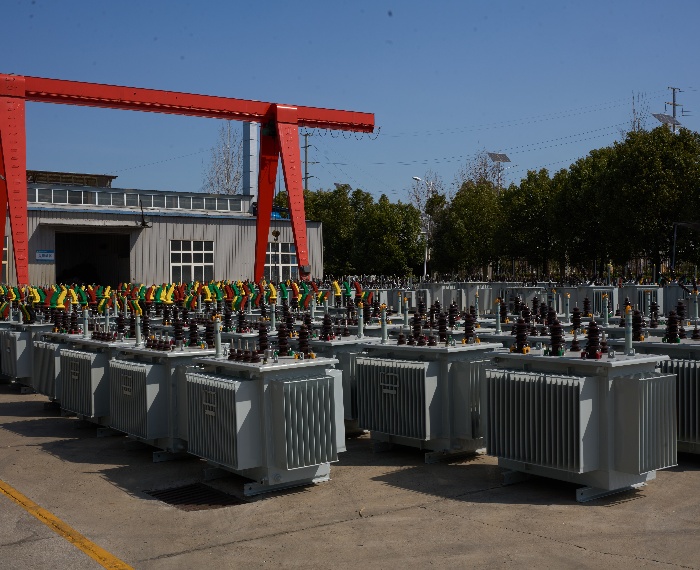
Transformer Factory Acceptance Test
The Transformer Factory Acceptance Test (FAT) for a 250kVA three-phase oil-immersed transformer is an essential procedure conducted before shipment to ensure the transformer meets all required standards and performs optimally. The main contents include:
Appearance and accessories inspection
Transformer body: Check whether the shell has mechanical damage or deformation. The paint coating should be uniform, without bubbles or peeling, and the color should be consistent. The nameplate content is complete and clear, and the marked model, capacity, voltage level, frequency, and other parameters are consistent with the contract requirements.
Accessory integrity: Radiator, oil pillow, gas relay, thermometer, oil level gauge, desiccant, and other accessories should be complete and firmly installed. The oil level of the oil pillow should be within the normal scale range, and the oil level gauge should indicate clearly without sticking. The desiccant in the desiccant is normal in color and does not change color due to moisture.
Basic test of electrical performance
Insulation resistance measurement: Use an insulation resistance tester to measure the insulation resistance of the high-voltage winding, the low-voltage winding to ground, and between windings. The winding needs to be fully discharged before measurement, and the ambient temperature and humidity during the test should be recorded during measurement. Under normal circumstances, the insulation resistance value of the high-voltage winding is not less than 200MΩ at room temperature, and the low-voltage winding is not less than 100MΩ.
Routine Test - Impulse Tests
Voltage divider (used to measure impulse voltage waveform, resistor divider or capacitor divider)
Oscilloscope (used to record impulse waveform, common brands such as Tektronix, Keysight)
Calibrate and check the impulse voltage generator, measurement system, and control system to ensure that the instruments and equipment are in good condition and meet the test standards.
Connect the impulse voltage generator correctly to each winding terminal (high voltage terminal, ground terminal) of the device under test, and ensure that all test instruments are well grounded.
Apply Test Voltage:
Select the appropriate impulse voltage waveform and amplitude according to the rated voltage of the equipment
Front Time
Time to Half-Value
Peak Voltage
Distortion
Ambient temperature and humidity (especially when the test environment needs to be corrected)
If the waveform deviation is too large, adjust the impulse generator parameters and reapply the test.
In special cases, inter-winding impact, voltage-to-ground impact or coil corner impact are performed (according to the test plan).
Waveforms are stable and meet standard specifications.
Waveform variations between repeated tests are minimal (usually good waveform overlap with no noticeable abnormal excursions).
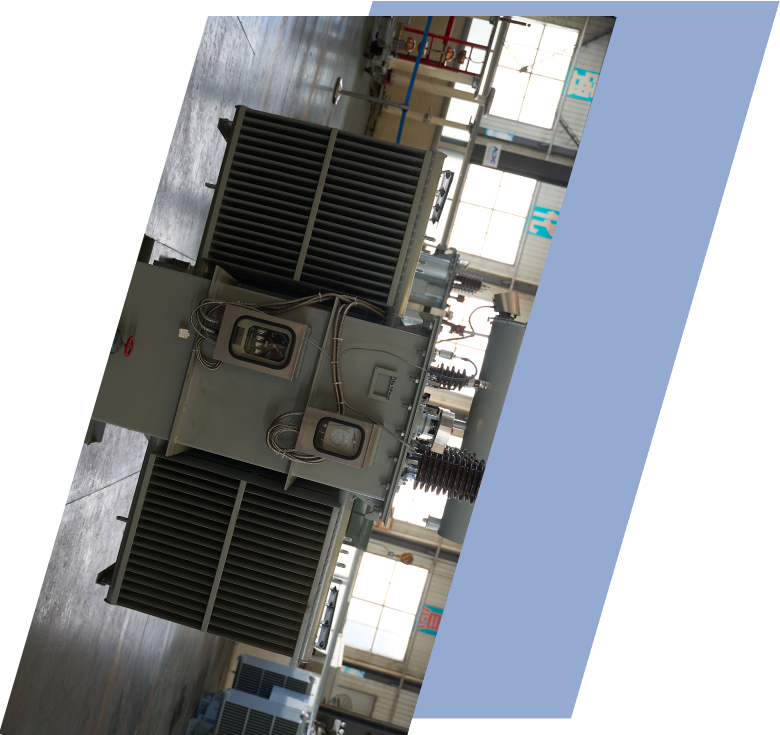
Application
Technical Advantages
Product Packaging
Related Products
FAQ From Customers
-
What is a Transformer?A transformer is an electrical device used to change the voltage of alternating current (AC). It works on the principle of electromagnetic induction, converting high-voltage current into low-voltage current or low-voltage current into high-voltage current. Transformers are widely used in power transmission, distribution systems, and various electronic devices.
-
What are the main uses of a transformer?The main use of a transformer is voltage conversion. Transformers are used in power transmission systems to help transfer electricity from power plants to consumers. In addition, transformers are also used in electronic devices such as chargers, televisions, power adapters, etc., to adjust the voltage to meet the requirements of different devices.
-
Do you have UL listed?Yes, our transformer has UL listed. We have exported to America many pad mounted transformer,substation transformer and HV.

